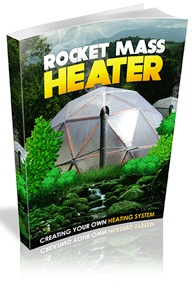Geodesic Greenhouse Gardening Tools
Top Ten Biodome Hand Tools You Really Need
Ever since the first person picked up a stick to dig a root or used a rock to crack nuts, humans have benefited from using tools. Now, of course, there is a specialized tool for almost any job out there. However, there are some tools that get used most often on a small farm and in the Eden Biodome Greenhouse.
All tools last longer if they are looked after. Keep them clean and dry (and out of the sun if there are any plastic parts). Put all tools away when the job is finished so they are easy to find the next time someone needs them. When using any type of leverage tool, remember that the force applied to it is quickly multiplied and trying to pry up a heavy rock or shovel-full of hard packed dirt can easily break the handle.
Of course, the human body and brain are the most important tools of all. It is important that tools are the right size and weight for each user. Just as children enjoy having real usable tools in their size, people who are taller than average will prefer tools with longer handles.
The Essential Tool Kit For Biodome Gardening or Outdoor Gardening
Shovels: The digging shovel is used vertically for ditches, post-holes, gravel, sand, garden beds and compost. The scoop shovel is used horizontally, often with the help of a rake, for scooping sawdust, snow or other light-weight material.
Forks: The digging fork is used like a digging shovel, especially for turning garden beds and digging up root crops such as potatoes and carrots. The pitch fork is used for hay and other material—clean for feeding, old for bedding, and dirty for composting.
Rakes: The steel rake is used for smoothing garden beds, paths or other rough ground and raking up rocks or twigs. The leaf rake (or fan rake) is used for raking up leaves, hay, fir cones or other lightweight material without disturbing the ground underneath.
Hoe and Mattock: The weeding hoe is used for garden weeding and making furrows. The mattock is like a heavy-duty hoe used for loosening hard soil, digging ditches and chopping roots.
Pruning shears: The small pruning shears are used for trimming grape vines, blackberry bushes, fruit trees and herb stalks. The big loppers are used for heavier cutting of fruit trees and shrubs.
Axes: The maul is used for splitting firewood. The hatchet is used for trimming branches, splitting kindling and shaping posts.
Wheelbarrow and buckets: The wheelbarrow is the “work-horse” for hauling all sorts of loads: gravel, dirt, manure, firewood, boxes of produce, even children! Buckets are also used for hauling.
Hoses and watering can: Keeping water flowing is critical for all plants in the Biodome Greenhouse. Buckets or barrels of water filled sitting in the greenhouse dome will absorb heat during the day and then release it at night to help passively maintain an even temperature. Most warm weather plants prefer the warmer water from barrels. The barrels can be filled from the hose and kept screened to reduce pests.
Steel bar: The steel bar is used for breaking up very hard soil or rock especially when digging post-holes. It is also a strong appropriate leverage tool for shifting large objects.
Carpentry tools: Simple carpentry construction (or demolition) of fences, gates, sheds and barns can be done with a few tools. These are: hammer, tape-measure, square, level, hand-saw, pry-bar, multi-driver screwdriver, locking pliers, fencing tool and ratcheting socket set.
There are, of course, many other tools that can be very handy, including electric and gas-powered machines. Everyone will have their favorites. This list is just a basic starting point for anyone wanting to grow food in a greenhouse dome, a food forest or conventional beds.
For more information about tools and materials for the home handy-person and gardener, try The Complete Illustrated Guide to Everything Sold in Hardware Stores and Garden Centers: (Except the Plants) by Steve Ettlinger.










